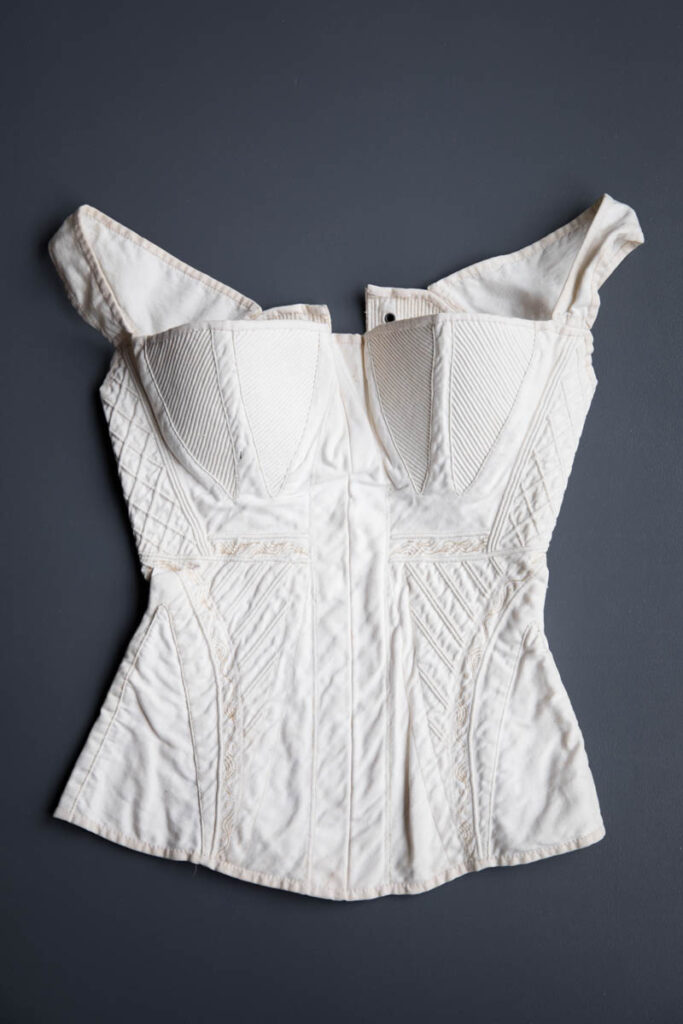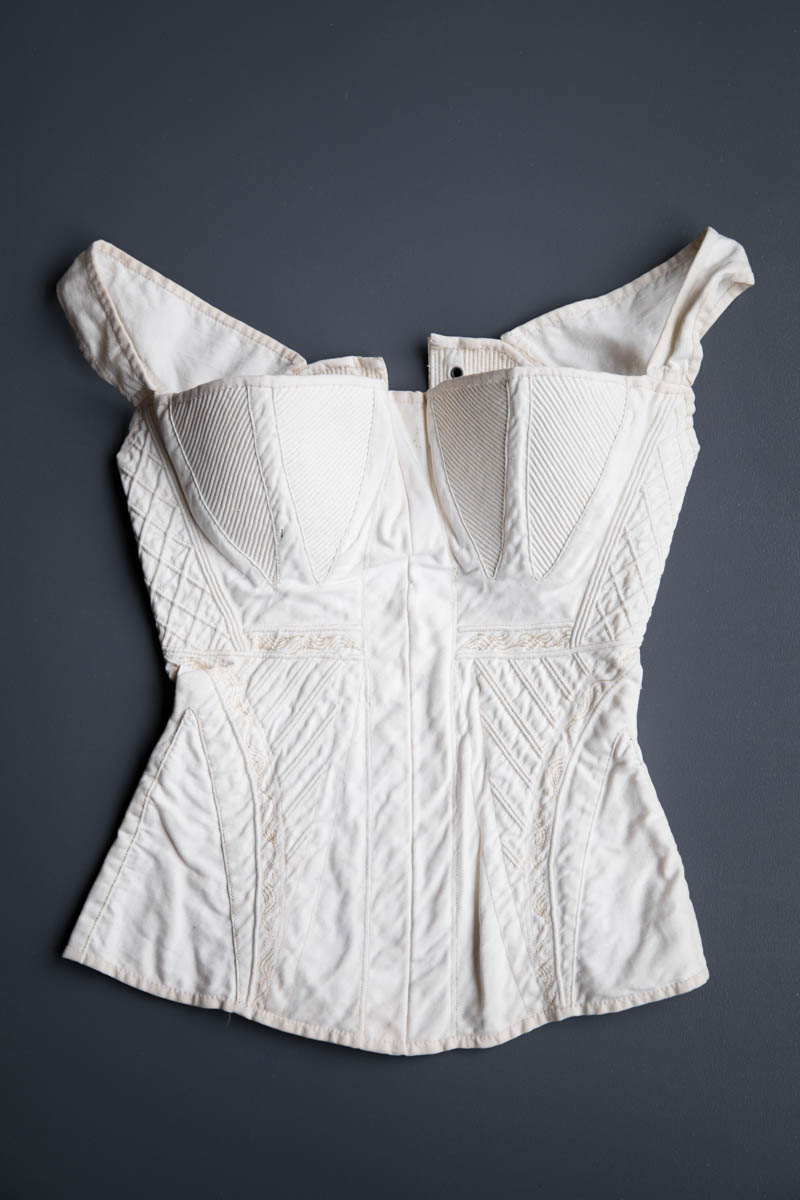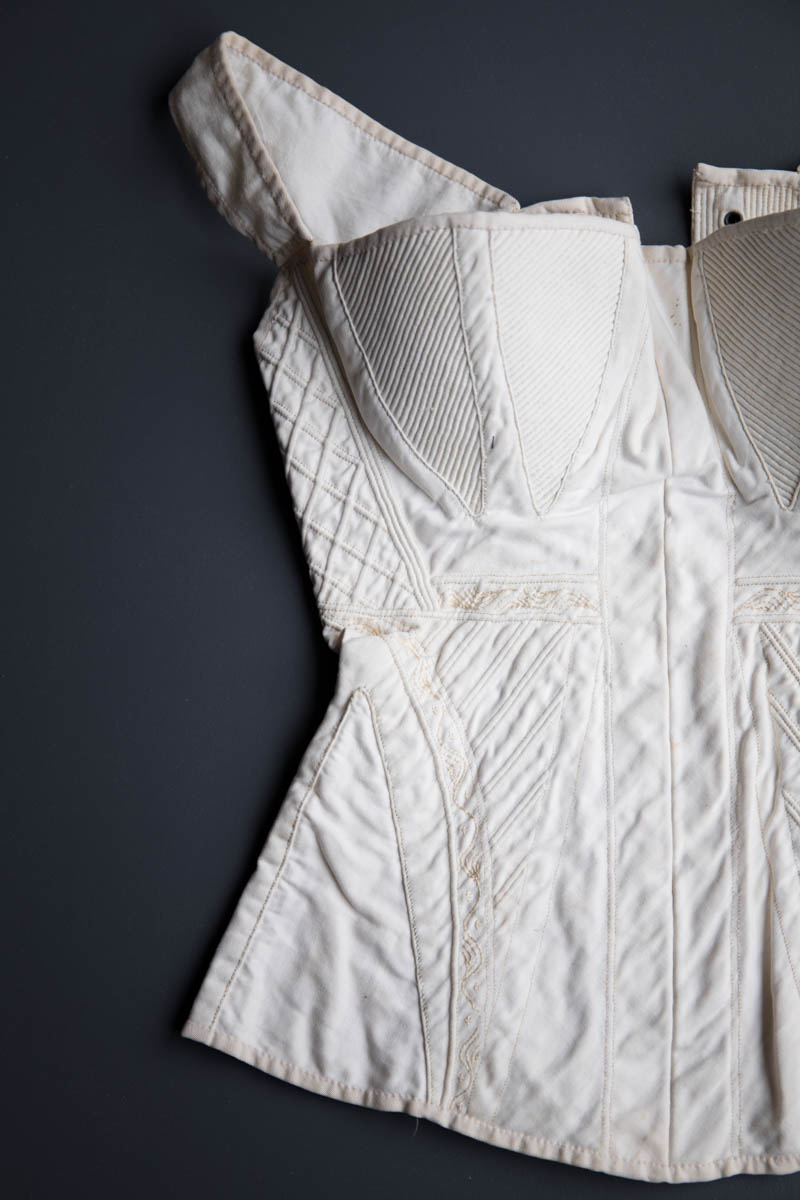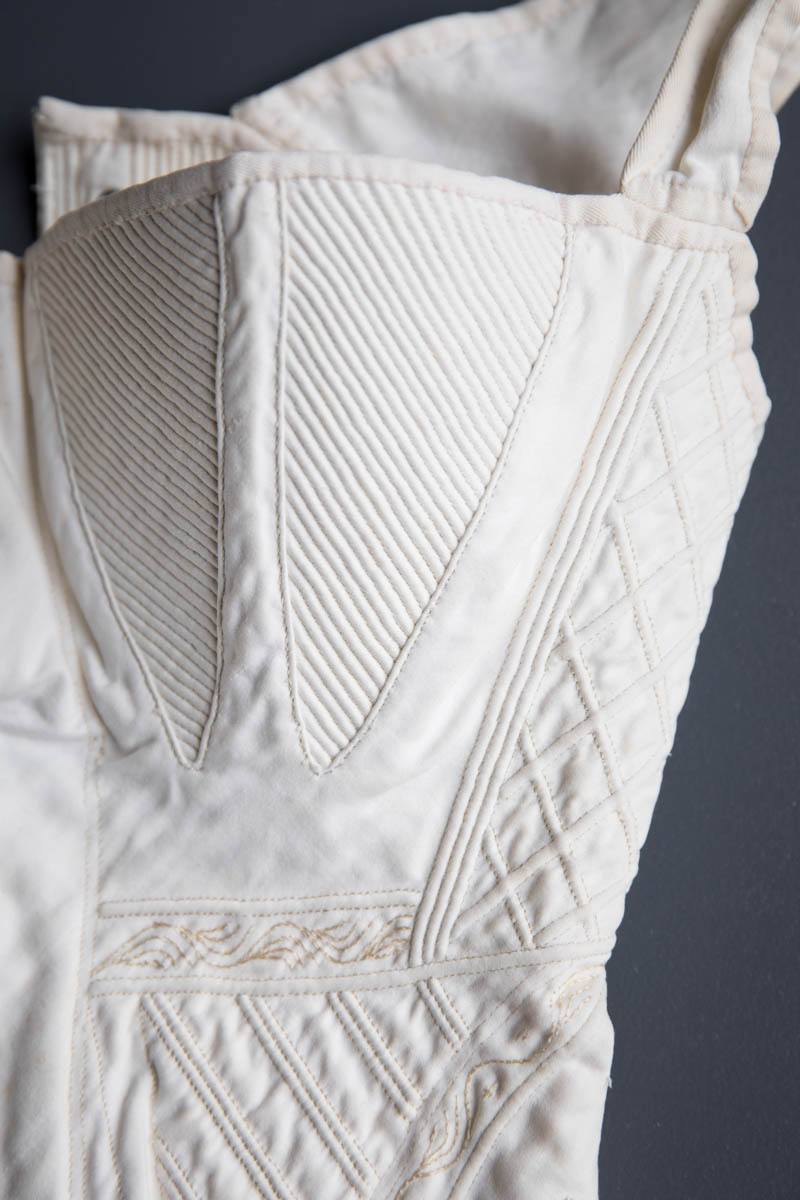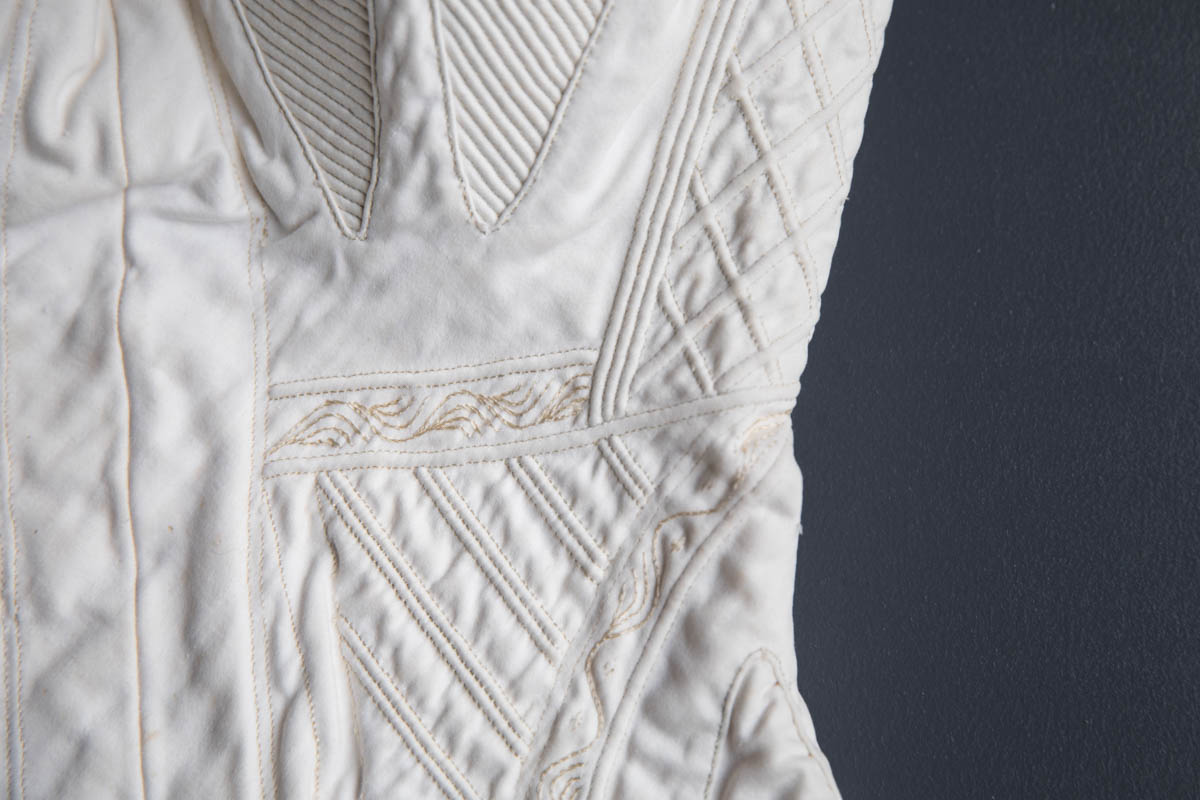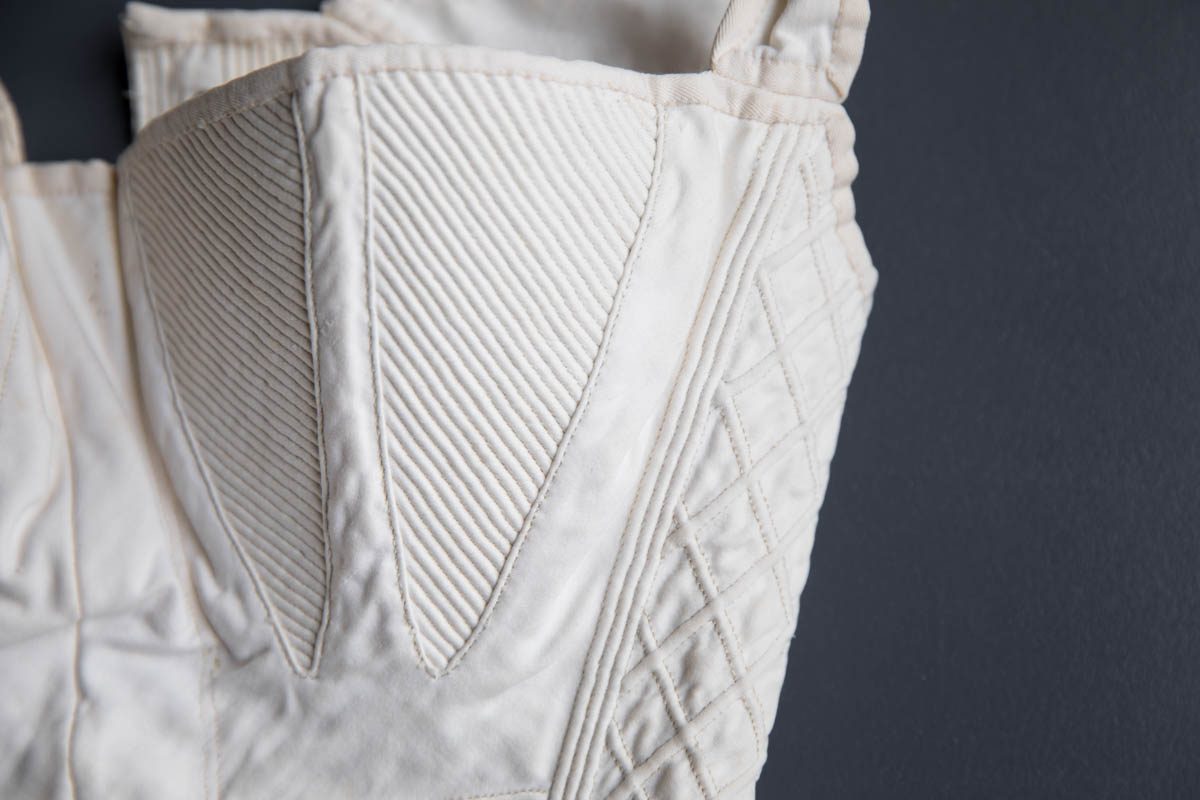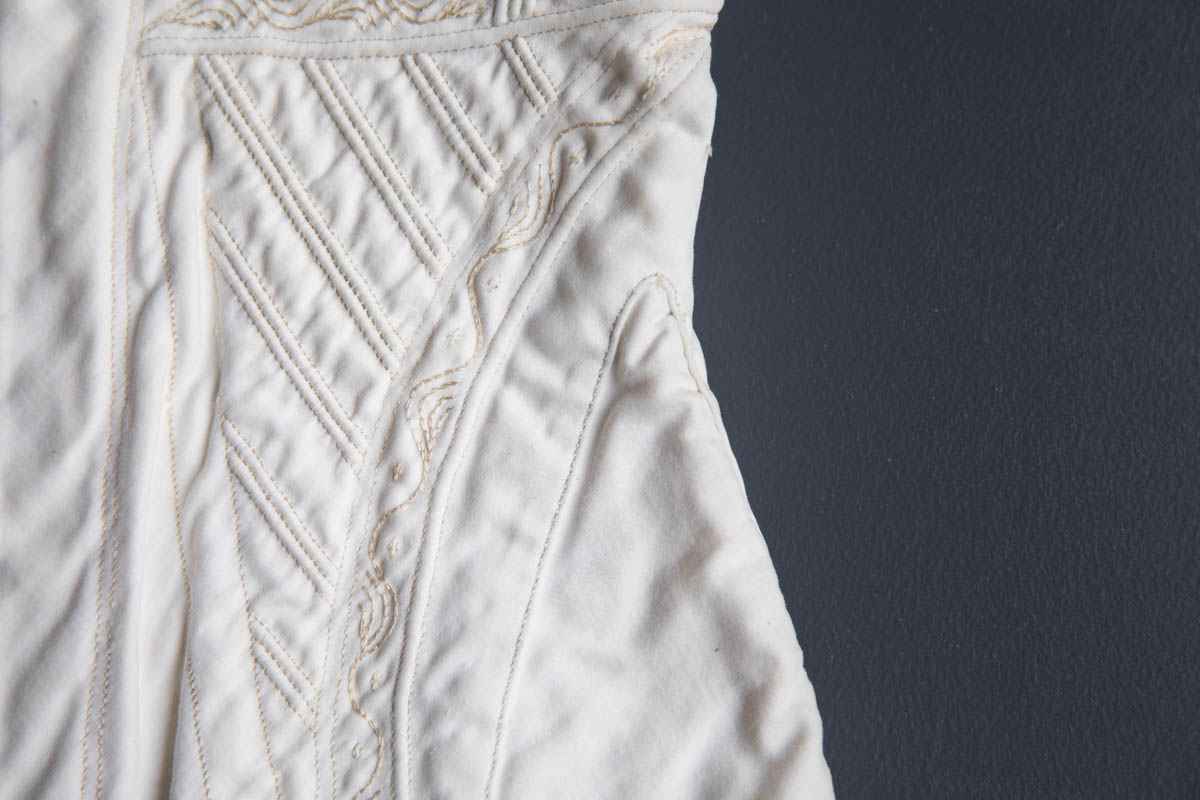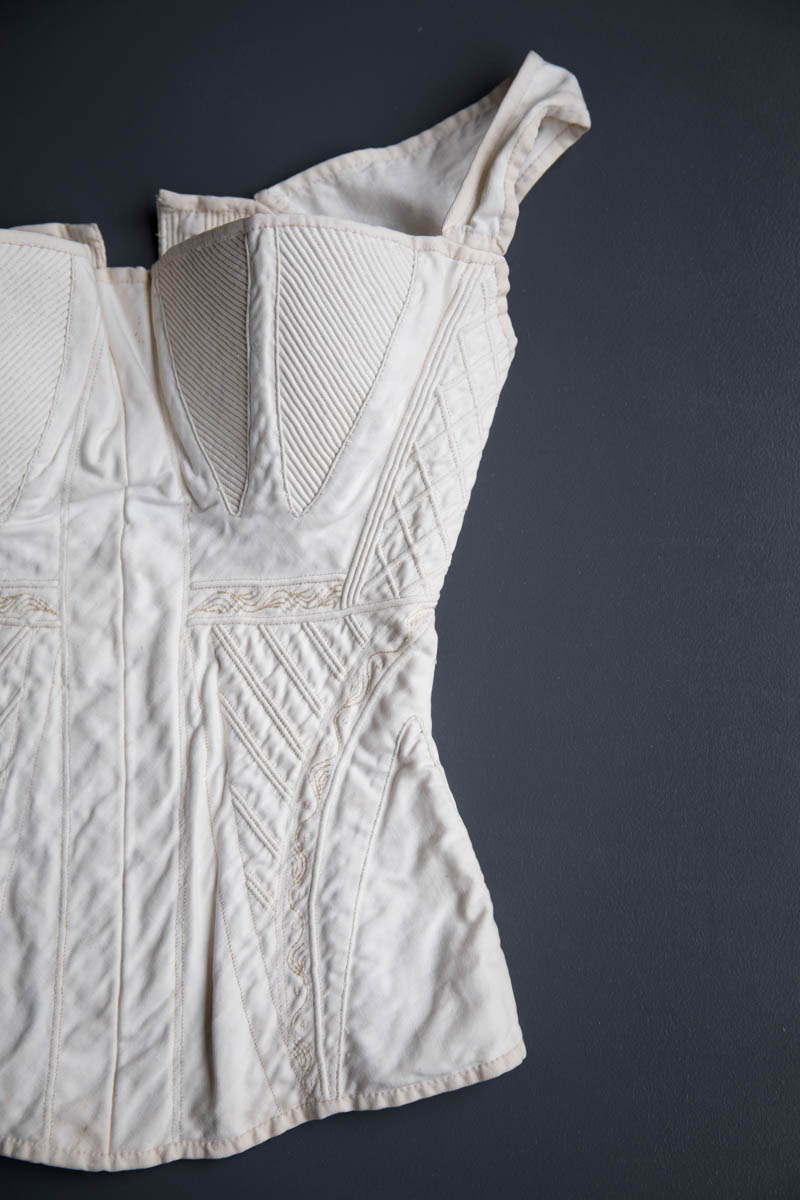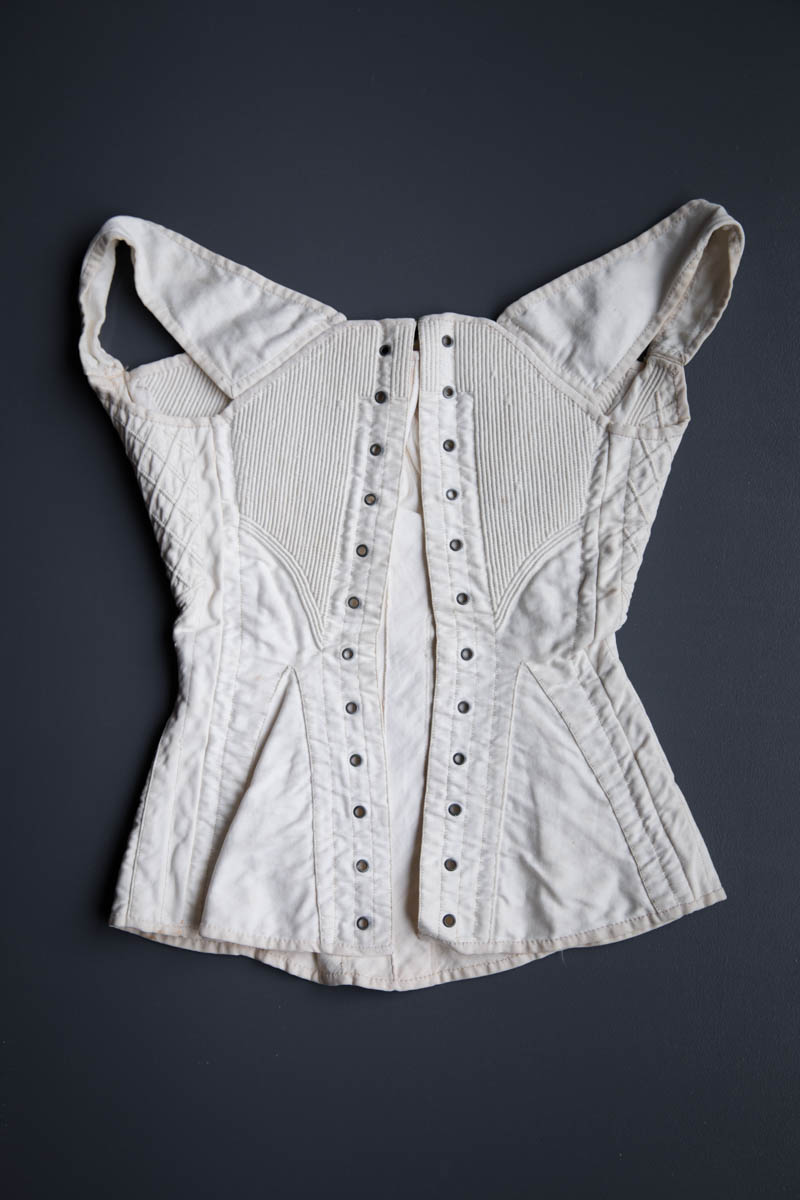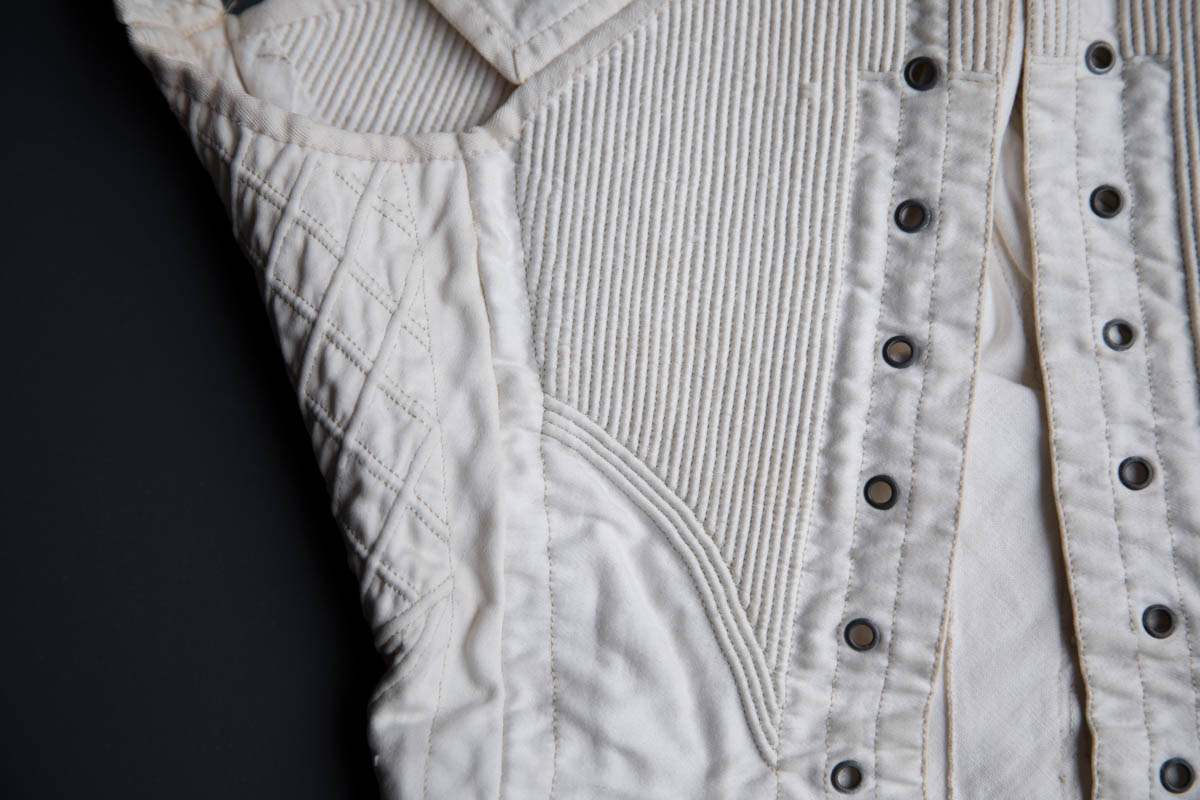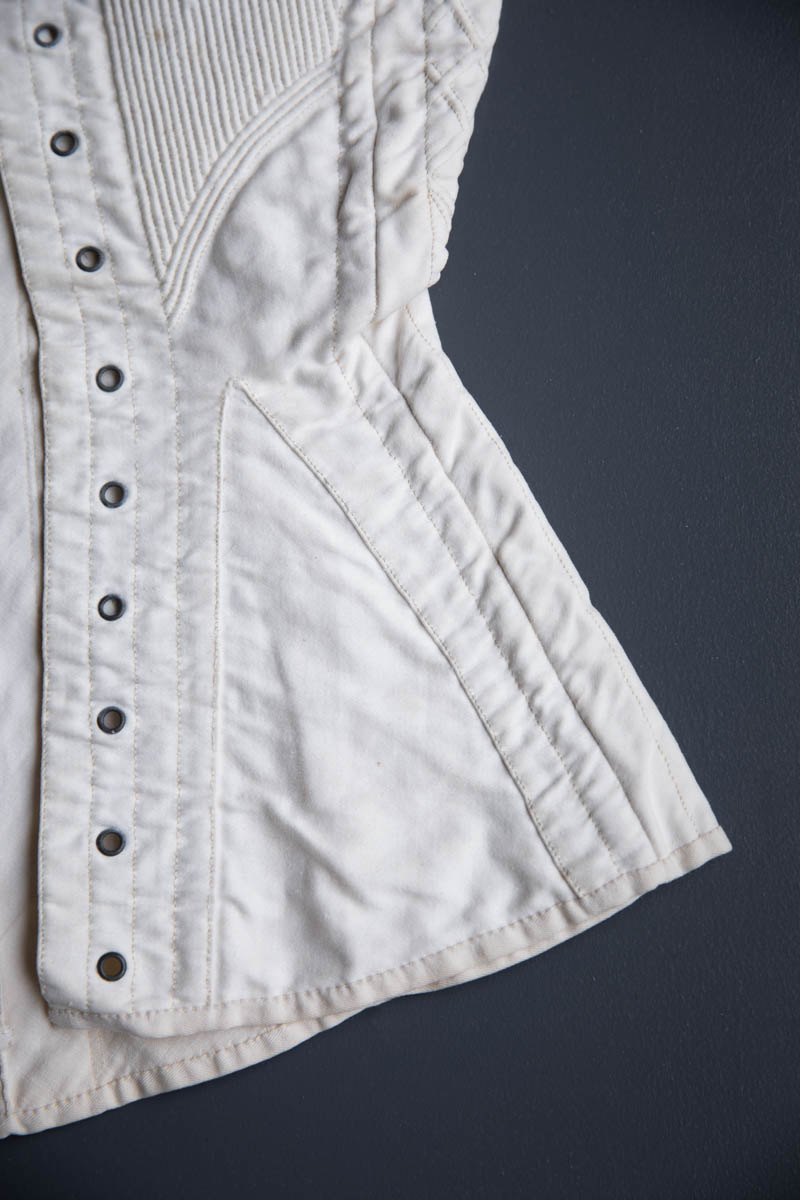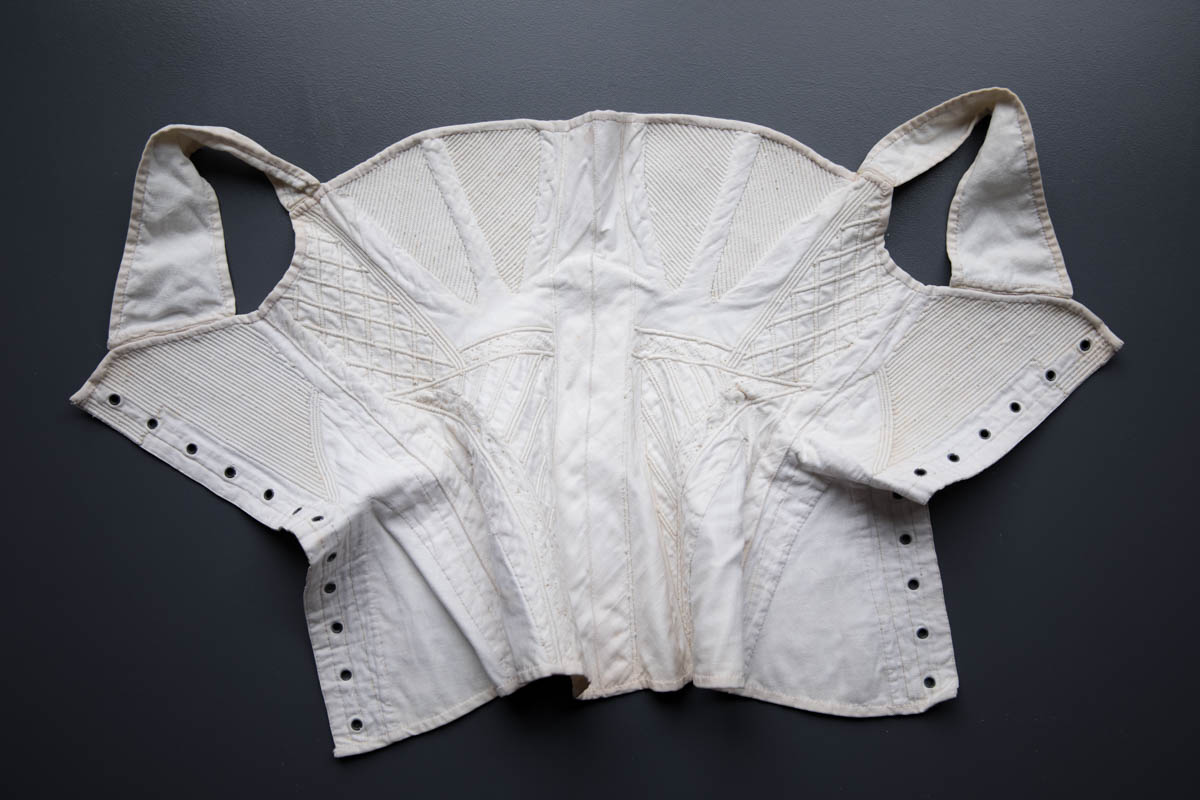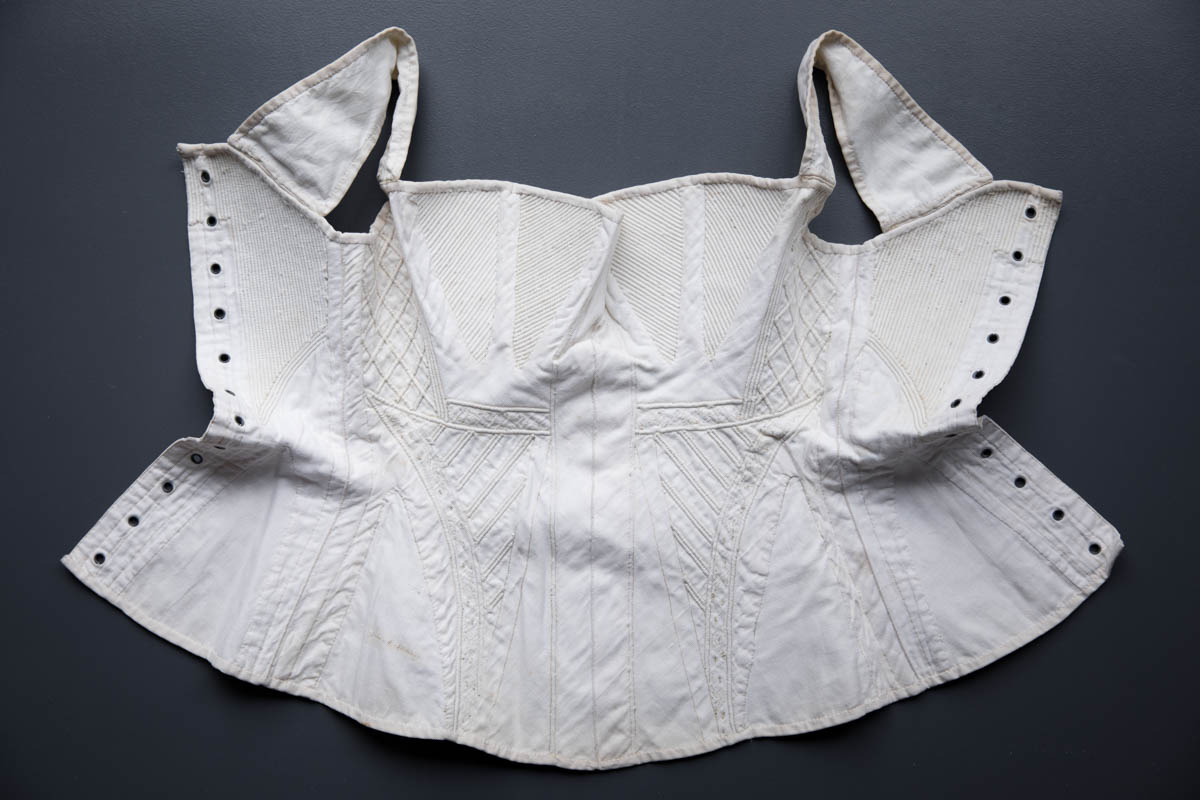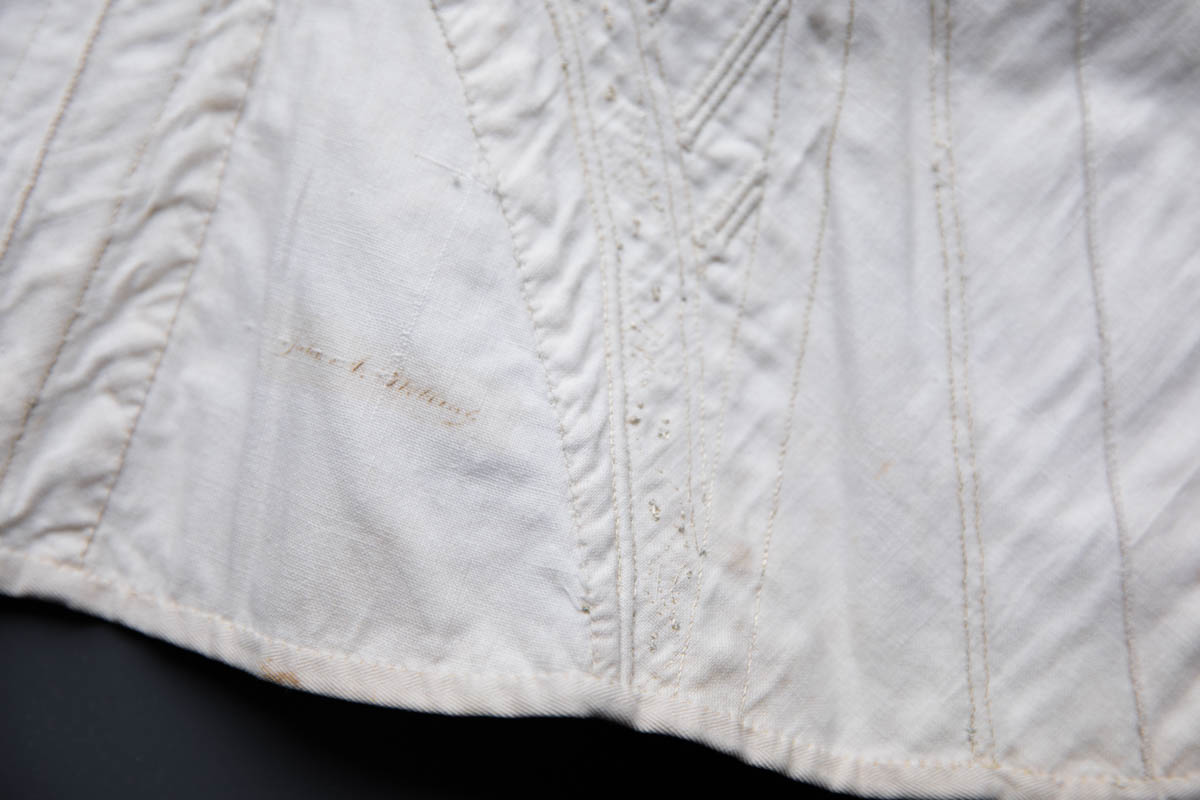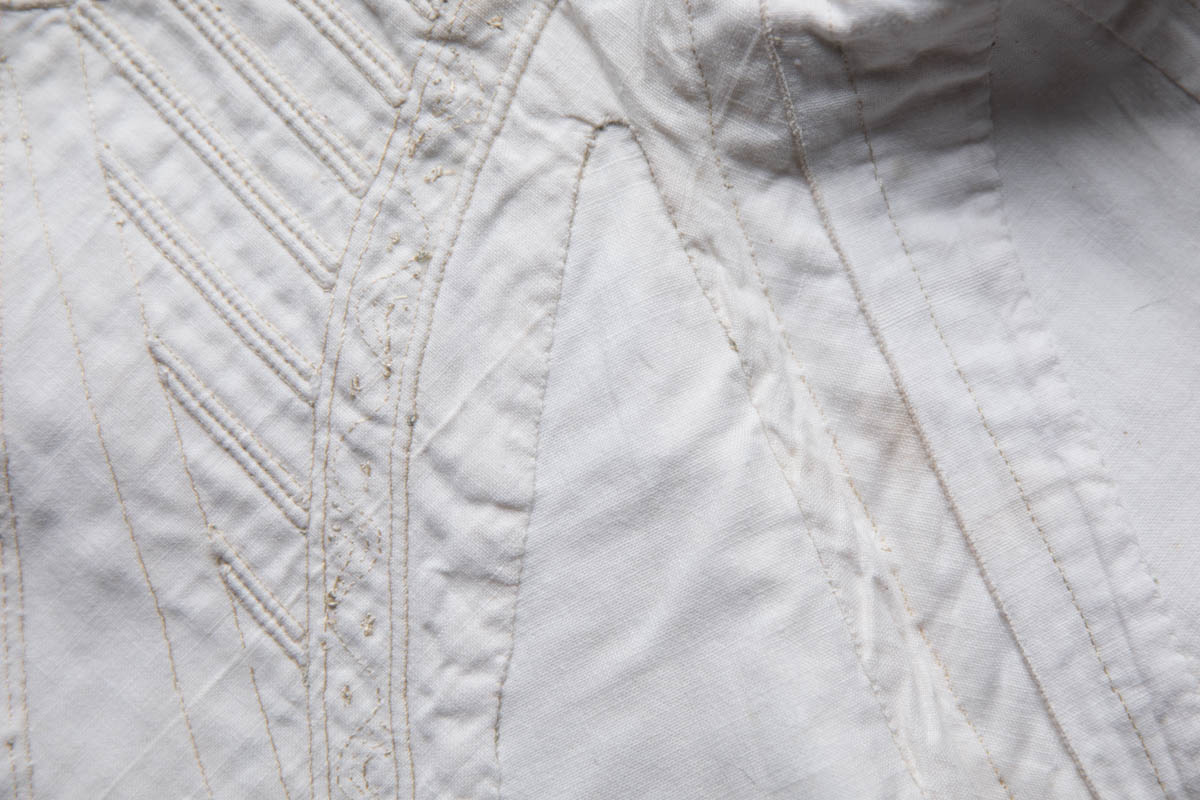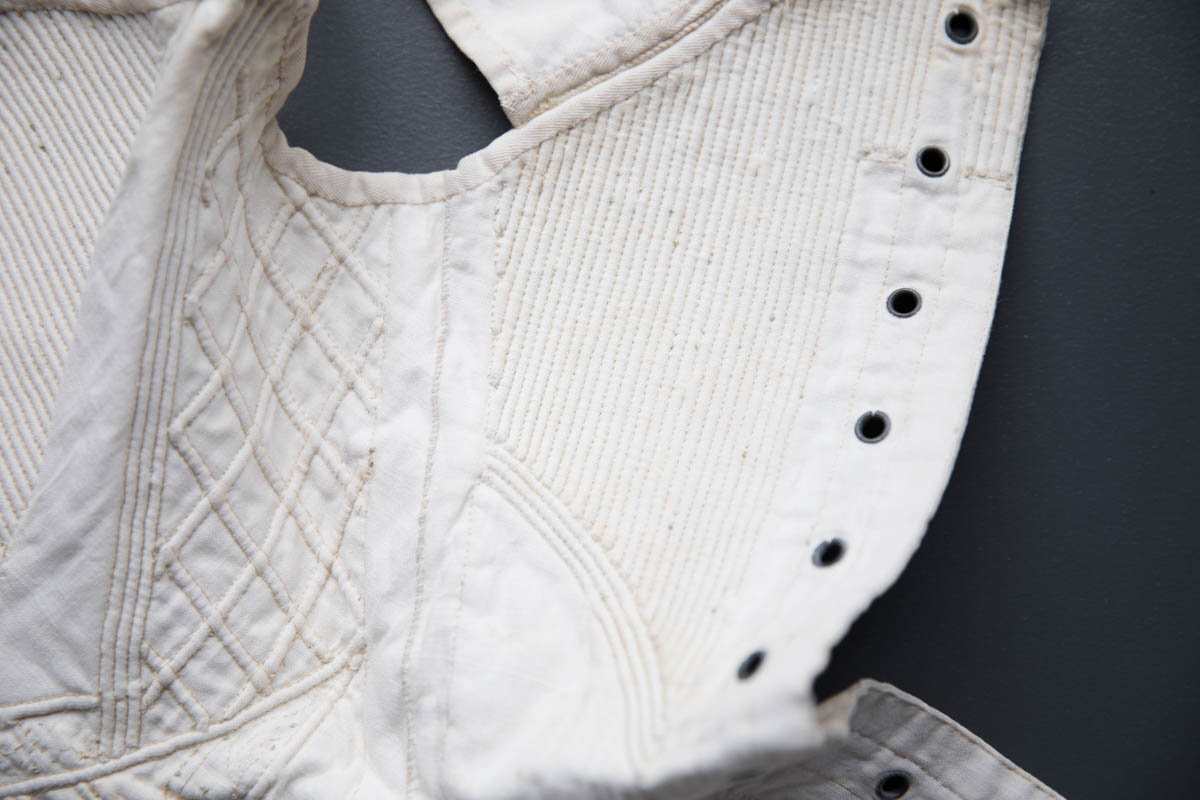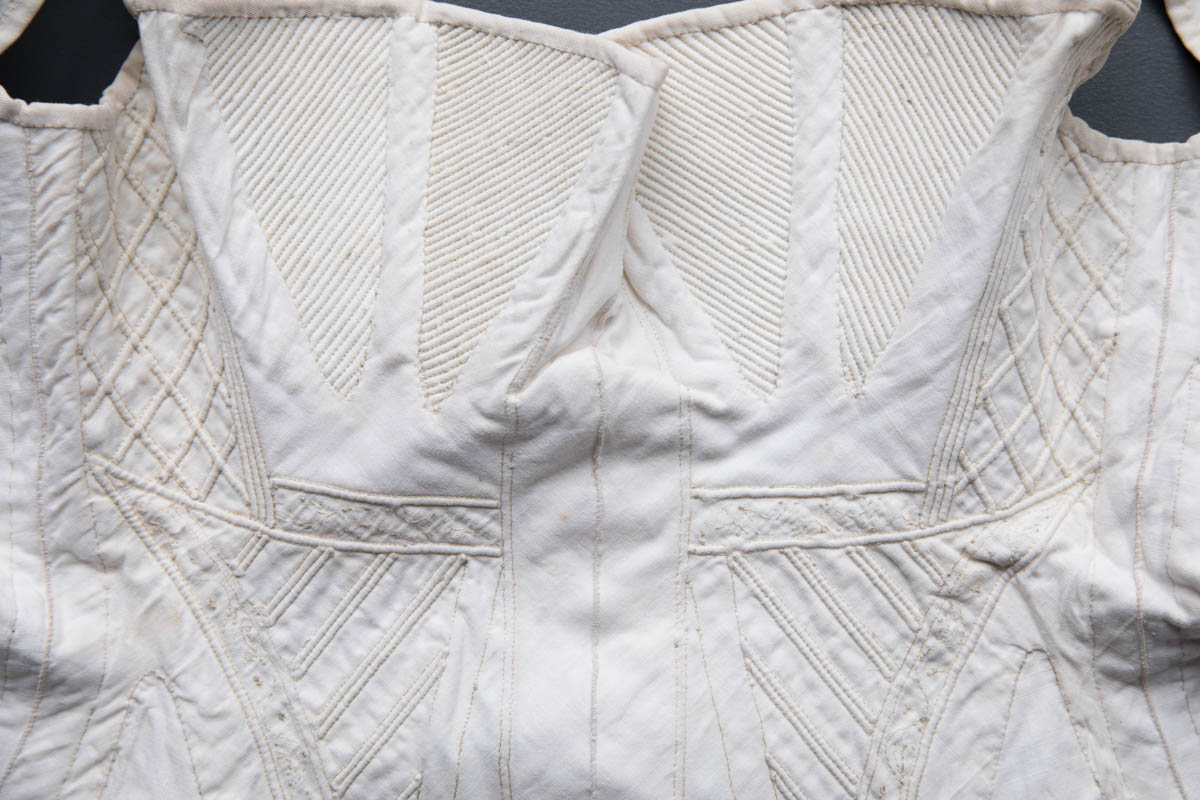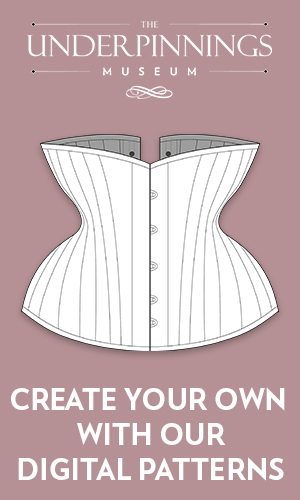Date: c. 1830-1840s
Origin: Unknown
Fabric: Cotton
Brand: Custom made
An early cotton corset, in a transitional silhouette between the conical stays of the 18th century, and the more hourglass lines of the later 19th century. This garment was made before the wide dissemination of the sewing machine, and so is completely hand stitched. It is created from two layers of tightly woven cotton and is structured with cording rather than boning. It offered gentle support to the body, with particular shaping focused on lifting the bustline. A wide busk (of materials such as wood, bone or baleen) would have been inserted into a pocket at the centre front to offer additional structure to the corset. The corset has metal eyelets at the rear, which date the piece to approximately c. 1830-1840, when metal eyelets are thought to have been invented. Prior to this invention, eyelets were either hand stitched or made of bone. It is, however, also possible that the garment was first created earlier with hand stitched eyelets, which were later overlaid with metal to re-enforce this area. The original lacing cord, which would have fastened the garment, is missing. The corset is lightly embellished with chain stitch embroidery in wave motifs under the bustline and following the front hip curves.
Fashion of this period was focused on wide necklines and voluminous skirts, contrasting with a low waist. The ideal silhouette would have had gently sloped shoulders, a rounded bust and narrow waist. However, rather than focusing on reducing the waistline as in later 19th c. fashions, this effect was achieved with exaggerated volumes in skirts and sleeves. The bust shape that this style of corset offered was known as ‘The Divorce’, lifting and separating the breasts. This is in stark contrast to the stays of the 18th c., which offered support through compression. The support is achieved through the combination of gore panels in the bustline, and the dense cording in this area. Corsets of this period extended lower on the hips than in previous decades, with gores in the pattern offering roundness and shaping to the area. Cording in the upper back panels would have offered additional support to the shoulders.
The interior of the garment is stamped with the original owner’s name, ‘Julia A. Hobbing’. Unfortunately, no information could be found about this person.
Purchased for The Underpinnings Museum’s collection with thanks to generous donations from our supporters in January 2019. Many thanks to Ryann Farmer for the object research assistance.
